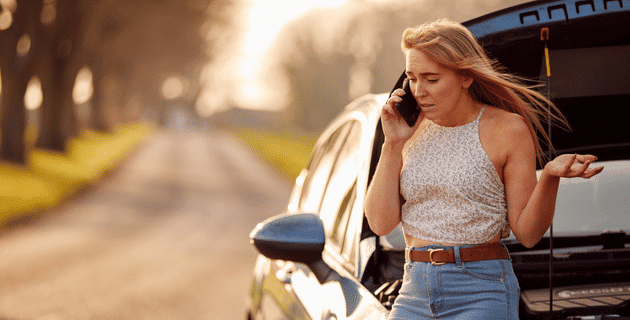
by California Casualty | Auto Insurance Info, Safety |
It’s never a good sign when our cars start to screech, thump, or grind…However, while we may not be excited to hear these sounds, paying attention to them can help us take care of the problem before it gets worse- keeping us safer and maybe even saving us some money.
We compiled a list of common car noises and what they could mean. Read on to find out what your car is trying to tell you.
Banging
A loud bang Like a firecracker could mean that your vehicle’s fuel is burning at the wrong time. It could be that the fuel-to-air ratio has more fuel than it should or there’s an issue with the spark plugs. While this is not an emergency, over time it could damage your exhaust system, so get it checked out.
Clicking
If you hear clicking sounds as you turn the steering wheel, it could be from your CV (Constant Velocity) joint. The CV needs grease or it becomes dry. You may just need to replenish the grease, or you might have to replace the shaft boot if it’s torn and leaking grease. If the damage is extensive, you may have to replace the whole CV joint.
Growling or Grating
A low growl or grating sound when you step on the brakes could mean your brake pads have worn away. Brake pads push against metal rotors or drums. When they’re worn away, they can start to damage other parts and become a costly repair. You’ll want to take care of this as soon as possible.
Hissing
A hissing sound could indicate a fluid leak such as radiator coolant leaking onto the engine. If hissing occurs when you speed up, it could be a vacuum leak from a small hose around the engine’s air intake. You’ll need to replace the hoses or other components that are leaking.
Humming
If you hear a low drone or humming sound that increases in volume when accelerating, check your tires. Their tread could be worn-out or wearing unevenly. The wheel bearing in your tires also may be damaged, which is a serious issue. Your tires also may need an alignment and some air. Have tires and bearings checked and, if needed, replaced as soon as possible.
Knocking or Pinging
A knocking or pinging sound under your hood that increases as you accelerate can occur when fuel in your engine detonates at incorrect times. Sometimes this is the result of using fuel with too low an octane level. Other times, it is more serious. There may be a worn crankshaft bearing or a piston that needs replacing. Address this sooner rather than later.
Rattling
Rattling, vibrating, or squeaking sounds when you drive over a speed bump or pothole could indicate a problem with your suspension. There could be bad bushings, the cushions that help absorb road bumps. Try performing a bounce test. Step outside the car and press down firmly on the front corner. If you hear the sound, you will want to get it checked out. If your car is rattling when the car is idling, it could mean a damaged heat shield in your exhaust system. Check that out, too, to make sure everything stays cool when you’re operating your vehicle.
Roaring
Your car’s muffler is designed to muffle the roaring sound made by your engine. However, if there’s a crack in the exhaust system, the gases that cause the roar can escape before they reach the muffler. Deadly carbon monoxide gas can even leak into the cabin. A missing catalytic converter also can cause this sound. Get this sound addressed right away.
Pro Tip: Catalytic converter theft is a growing problem and they are expensive to replace. Consider getting your VIN number stamped on the catalytic converter or installing an anti-theft device.
Rumbling
A low-pitched engine rumble with vibrations can indicate an exhaust leak in a gasket, flex pipe, resonator or muffler. A dirty fuel injector could cause a rumbling sound. (Try adding a fuel injector cleaner to your gas tank). A dirty air filter could be another cause, so try replacing that part. Your oxygen sensor could be creating the wrong mix of fuel and oxygen. Finally, the sound could be caused by worn spark plugs that fire inconsistently.
Scraping
A rock or other debris stuck in your brake rotor could cause a scraping sound and cause damage over time. Get that removed before it becomes a problem.
Squeaking or Squealing
Squeaking or squealing could be caused by a number of things. If the sound happens when you brake, you may have worn brake pads, improperly cut brake rotors, or glazed brake pads that get too hot. You also may have broken anti-rattle clips or incorrectly installed insulation shims. If you hear loud squealing after you start your car, but then the sound gradually fades, it may be a serpentine belt that is failing. If you hear the squeal when you turn on the air conditioning, it may need a serpentine belt adjustment or replacement. Squeaking or whining when turning the steering wheel could be a power steering issue. There may be air in the fluid and adding more fluid could help. However, if you hear a high-pitch whine when you make a turn, the pump could be damaged. Get these sounds checked out for your safety.
Thumping
When you brake and hear a thumping sound, that means potential damage. A thumping in the rear could be rear brake drums and thumping in the front could be rotor damage. Rotor damage can be caused by a car not being used, and just sitting outside and rusting.
Washing Machine Sound
If your car sounds like a washing machine on the high-spin cycle with loose change inside, pull over as soon as safely possible. This likely means a loose lug nut is inside your hubcap. When that happens, the tire could fall off or you could have a blowout. Pull over as soon as you safely can. Jack up the car and use a lug wrench to tighten the lug nuts. Fill the tire if the pressure is low or swap it out for the spare tire. Call roadside assistance if needed.
Whirring
If your car whirs like a helicopter and gets louder as you travel faster, it’s most likely a worn-out wheel bearing. You can check this while driving. Turn the wheel to the left and then to the right and see if the noise disappears briefly. Wheel bearings should be replaced as soon as possible.
Figuring It Out
If you are able to do so safely, record the sound your car is making using your phone or other device. Then play it for your mechanic. This will help to pinpoint the exact sound you are hearing.
Finally, if your noise isn’t listed here, or you’re not sure about what sound you hear, it’s always a good idea to consult a trusted mechanic. This will help to find any problems and fix them before they become expensive issues.
Paying attention to your car’s dashboard lights and sounds will help you keep it well-maintained. Protect your vehicle with the right insurance and keep up with auto recalls for added peace of mind.
This article is furnished by California Casualty, providing auto and home insurance to educators, law enforcement officers, firefighters, and nurses. Get a quote at 1.866.704.8614 or www.calcas.com.
by California Casualty | Auto Insurance Info |
We have amazing employees at California Casualty. The New Employee Spotlight is a series aiming to highlight the talented individuals that are brand new to our team. Please help us give them a warm welcome!
Today we’re spotlighting Claims Adjuster, Aaron Kerr
Let’s get to know, Aaron
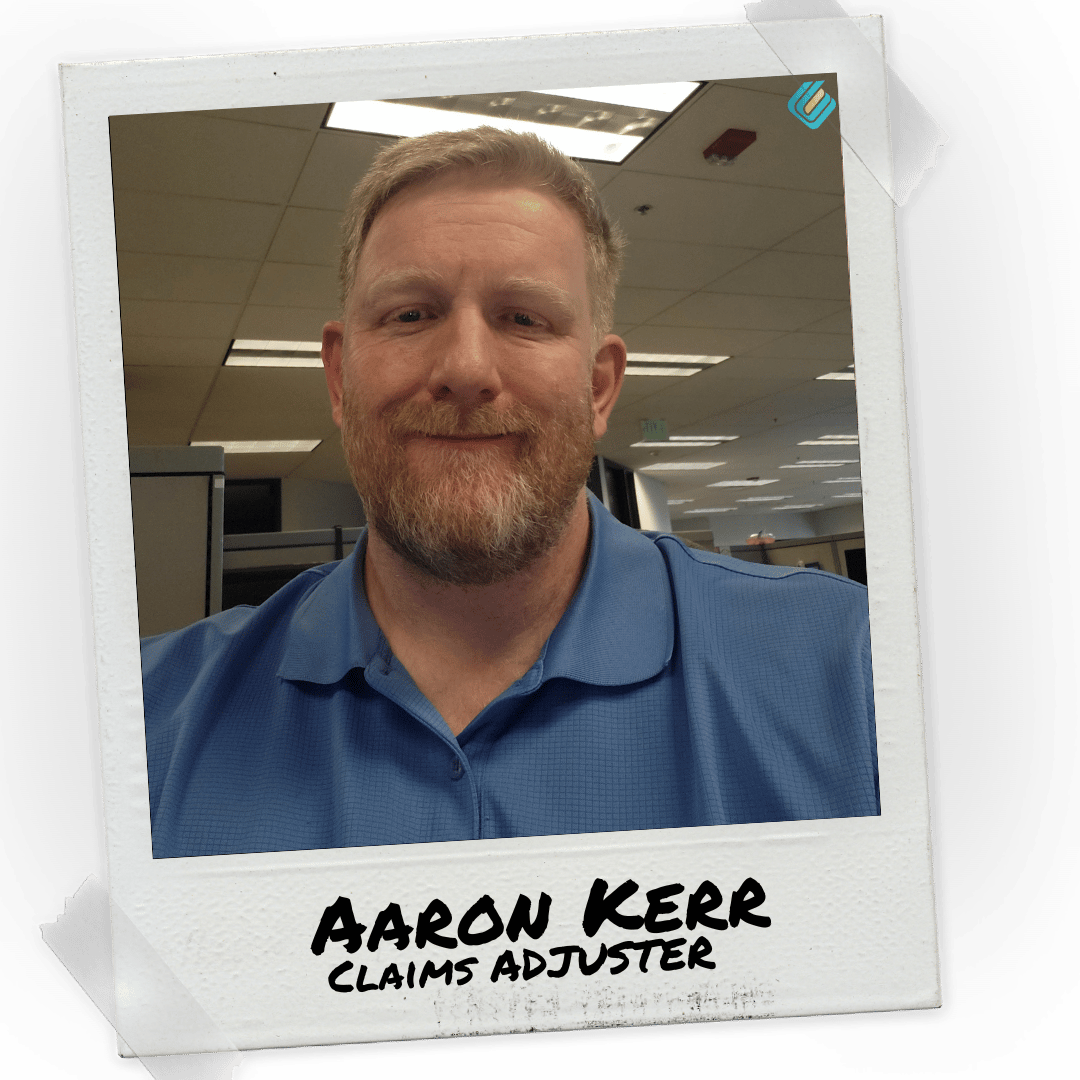
Where are you from?
Colorado Springs, CO
What is one interesting fact you want us to know about you?
I have 7 chickens, 3 cats, 2 dogs & a lizard.
If you could eat one food for the rest of your life, what would it be?
Chinese
What do you like to do on the weekends?
Miniature painting
Camping
Bike Riding
What made you want to start your new career with California Casualty?
I had been with USAA for ~15 years prior and was not happy with the direction that my career was taking (or rather not taking). I found California Casualty after my best friend got a job here and, can’t be more excited to complete my career here!
If you want to learn more about Aaron or are interested in a career at California Casualty, connect with him on LinkedIn! Or visit our careers page at https://www.calcas.com/careers
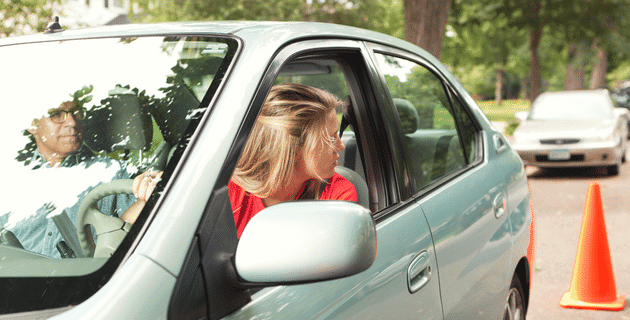
by California Casualty | Auto Insurance Info |
Teaching your child to drive can be exciting and emotional, and you want it to go as smoothly as possible. If you’re getting ready to slip into the passenger seat alongside your teen, remember, you’ve got this. In honor of Teen Driver Safety Week, we’ve put together a guide to help.
Tip #1: Remember there is no common sense for new drivers.
Your teen is used to zoning out on car rides, maybe listening to music on headphones or playing with his/her phone. As a result, teens may not even know familiar routes. They also probably won’t understand the impact of some decisions that they make behind the wheel. Before you even get in the car, prepare your young driver for the road.
-
- Make sure your son or daughter knows the special driving rules for teens in your state, such as curfews and number of passengers allowed.
- Show your teen where the car’s registration and insurance are kept.
- Set the rules to minimize distracted driving. If you allow the radio or other music, make sure it’s set before you drive. Avoid eating while driving. Keep cell phone use for emergencies only.
- Discuss when your teen should pull over to the side of the road, such as when he or she is drowsy or when ambulances or police cars sound their sirens.
- Note that there are rules of the road to follow, and sometimes being nice (e.g. braking hard on a major road to let a car in) is an unexpected move that could cause an accident.
Tip #2: Practice in the parking lot.
Remember that basic driving skills are natural to you but new to your child. Take the time to practice in a low-pressure environment, such as an empty parking lot. Spend at least three 45-minute sessions with your teen in the lot before moving on to other driving scenarios.
-
- Practice adjusting and using side and rearview mirrors.
- Remember to look where you want to go.
- Start and stop smoothly. Experiment with stopping distances based on speed.
- Understand the vibrations of the anti-lock braking system which can startle drivers.
- Practice driving on the right side of the road and making turns into the correct lane.
- Pull into parking spots and back out.
Tip #3: Build skills slowly.
Slowly progress to roadways requiring different levels of driving skill. Spend at least 2 hours each on the following areas before moving on to the next level.
On neighborhood roads, practice:
-
- The position of your car on roads with and without lines.
- Turning right and left, with and without stop signs.
- Giving the right of way.
- Parking at the curb including parallel parking.
On easy main roads, practice:
-
- Lane changing (check mirrors, then signal, check blind spot and then change lanes).
- How far back a car is in reality based on how it looks in the mirror.
- Right of way at intersections.
- Sharing the road with other vehicles, pedestrians, and bicycles.
- Using the shared left turning lane to exit the road.
On high-speed main roads, practice:
-
- Lane changing at high speeds (different in feel from changing at low speeds; less steering required).
- Merging onto a high-speed road.
- Negotiating traffic circles and U-turns.
On highways, practice:
-
- Merging onto a highway from an entrance ramp and exiting on an exit ramp.
- Using mirrors to merge and change lanes.
- Which lane to use for which purpose (e.g. left is the passing lane).
- How to identify your location if your car breaks down on the highway.
Tip #4: Lead by example.
Your son or daughter may inherit your driving habits, so make sure to model the behavior that you want to see. As your teen becomes more comfortable driving, he or she may become critical of your driving habits. Use those as teaching opportunities.
When you drive:
-
- Enter the GPS destination before you leave.
- Wear your seatbelt.
- Don’t text and drive. Don’t eat and drive. Don’t drink and drive.
- Don’t speed.
When your teen drives:
-
- Respect your teen as an adult. Don’t micromanage the driver.
- Avoid high levels of emotion. That can create fear. Anticipate dangers and discuss them calmly before you reach them.
- Remember to praise your teen for a job well done.
Make sure that your car is well maintained and fully insured with your teen listed on the policy. Talk to your insurance agent about ways that you can save with a teen driver.
This article is furnished by California Casualty, providing auto and home insurance to educators, law enforcement officers, firefighters, and nurses. Get a quote at 1.866.704.8614 or www.calcas.com.
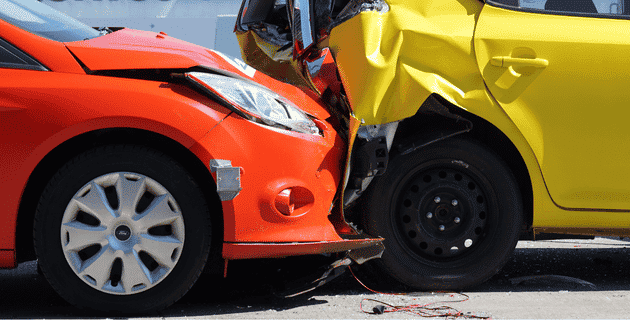
by California Casualty | Auto Insurance Info, Safety |
The open road, the sunshine, and vacation time—it seems that summer is meant for road trips. With so many of your fellow travelers on the road, though, there’s a chance for collisions. That’s especially true if you’re on a long drive, on unfamiliar roads or distracted by confusing signs, or even the passengers in your car.
So, how do you avoid a vacation-spoiling accident? Knowing the most common summer collisions – and their causes – can help you take action to avoid them. Here’s what you need to know.
Rear-end Collisions
These common types of collision can be caused by tailgating or distracted driving during stop-and-go traffic. Rear-end collisions also happen when motorists drive too fast or aggressively. To avoid a rear-end collision:
-
- Slow down and watch your speed.
- Increase your following distance between your vehicle and the car in front.
- Avoid stopping suddenly or swerving.
- Make sure your taillights and turn signals are working.
Pro Tip: If your car has one, an automatic braking system or forward collision warning system can help prevent these types of accidents.
Front-end Collisions
When the front end of your vehicle strikes another vehicle, tree, telephone pole, or other object, it’s a front-impact collision. These types of crashes are common during rainy weather. To avoid a front-end collision:
-
- Drive more slowly in the rain. Roads are slippery. Fog can impair your vision. Give yourself time to adjust.
- Increase your following distance in inclement weather. This will help give you more time to react.
- Avoid distractions; even playing with the radio or talking to passengers can divert your attention.
- Lane keeping systems can help. They alert you when you’re drifting out of lane, and can even steer your car back into the lane.
Side-impact Collisions
You know these as T-bone collisions or sideswipes. They often occur at intersections, as a result of confusion about which vehicle has the right of way. However, they also can occur if you run a red light or change lanes without warning. To avoid a side-impact collision:
-
- Look both ways as you approach a stoplight. Slow down when you see yellow; don’t speed up. You could risk running a red light.
- Come to a complete stop at every stop sign. Know where other traffic is before proceeding.
- Check your blind spot before changing lanes.
- When passing cars, be alert for other drivers changing lanes unexpectedly.
Highway Construction Collisions
Construction crews are out on the roadways, often sharing space with vehicles traveling at high speeds. That’s why it’s especially important to watch for signage and adjust your speed as you navigate past a construction site. To avoid a highway construction collision:
-
- Pay attention to construction site speed limits and follow them.
- Watch for signage and personnel directing you where to go.
- Slow down as you are passing workers and be alert.
- Increase your following distance for the car in front of you.
Interstate Collisions
High speeds coupled with distracted, aggressive, or drowsy drivers can cause accidents. When a crash happens on the highway, it can sometimes have a chain reaction effect. Make sure to use due diligence when you’re traveling at high speed around other vehicles. To avoid an interstate collision:
-
- Follow the speed limit and maintain a safe following distance from other drivers.
- Clearly indicate with your turn signal when you wish to change lanes. Check your blind spot before doing so, and make sure cars in other lanes aren’t heading to the same place you are.
- Maintain your distance from cars that are driving aggressively or dangerously.
- Limit distractions. Your priority is to drive safely.
Parking Lot Collisions
We may not think about it, but parking lots can be dangerous. When the lot gets busy, it’s easy to have multiple cars moving in different directions. Inattention or simply a bad decision can cause a collision. To avoid a parking lot collision:
-
- If possible, park in a spot away from other cars.
- Check your surroundings before getting into your car to pull out of your parking space.
- Don’t rely on technology alone (such as rearview cameras). The image can be distorted by sunlight or shadows. Use your mirrors.
- Move slowly and be aware of pedestrians and cars in the immediate area.
- Don’t drive when you’re drowsy. If you’re feeling tired or having a hard time staying awake, pull over in a safe place and take a power nap.
- Don’t use your cell phone when driving except for emergencies.
- Don’t eat or drink anything in spillable containers while you’re driving.
- Don’t drive when you’ve had a few drinks. Use a designated driver or call a ride-share service instead.
- Avoid driving during high traffic times.
- Take your car in for a maintenance checkup before you go on a road trip. This will help avoid equipment-related accidents.
Finally, make sure your car is insured so you are fully covered in case of an accident.
Safe travels!
This article is furnished by California Casualty, providing auto and home insurance to educators, law enforcement officers, firefighters, and nurses. Get a quote at 1.866.704.8614 or www.calcas.com.
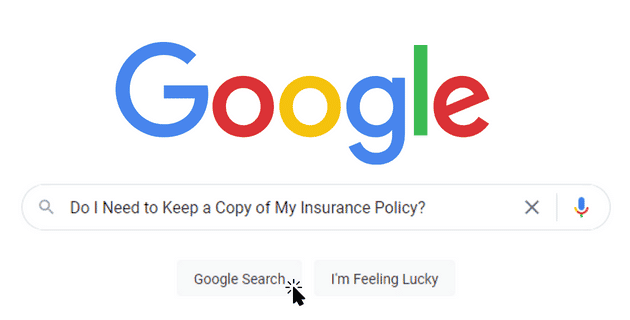
by California Casualty | Auto Insurance Info, Homeowners Insurance Info |
If you’ve ever sat down to read a declaration page on an insurance policy, you know there’s a lot that goes into the documentation. This information is clearly important, but there’s a lot of paperwork. Do you really need to keep it all, and for how long?
Here’s a quick reference guide for your insurance paperwork, including how to organize it, store it, and for how long.
Insurance Policy
Whether you have home insurance, an auto policy, a renter’s policy, or another type of coverage, you will be issued a document that spells out the insurance coverage. This main policy document is multiple pages. It includes all the details of your policy, including coverages and limits, discounts, and endorsements. It also is a resource with definitions of insurance terms and explanations of the claims process. If you are bundling your coverages, such as with home and auto, you will have an insurance policy document for each.
You need to know the coverage that you have, but you don’t necessarily need a hard copy of your policy document. If your insurer offers digital access on their website, you can toss the paper version. Either way, you will want to keep a hard copy of the declarations page.
Certificate of Insurance (COI)
This document is the summary of your coverage. Its format is easy to scan and provides a quick look at your coverage details. It’s especially useful to share with lenders who require proof of insurance if you are financing your home or car.
Keep a copy of your certificate of insurance for as long as the policy is active. It is your proof of insurance. When you renew your policy, you can throw out the old COI.
Insurance Claims Documents
Accidents happen, and things get damaged and stolen. You may file a claim with your insurance company when this happens. If your claim is for an auto policy, you will get an accident report. You also may have medical reports and bills. If your claim is for home damage or theft, you will have an inventory of damage. You also will have repair bills, receipts, and other paperwork. If it’s a third-party claim, where you caused injury or loss to another person, you will receive documentation as well.
Claims can sometimes take years, especially if medical bills are involved. As long as your claim is open, keep all of the paperwork. Only throw it out after you have received the payment.
Vehicle Insurance Card
Your auto insurance card fits in your wallet or glove compartment, which is where it should be kept. That way, you have a hard copy even if you have access to a digital version. Hard copies are useful in case you are pulled over by law enforcement or need to exchange the information with another driver in the event of an accident.
Keep the hard copy of your auto insurance card as long as your policy is active. You may dispose of it when the policy renews and you receive a new card.
Billing Statements
You will receive regular billing statements from your insurer, usually monthly. These may be by mail or online.
Keep your billing statements for tax purposes if you have a home business or you use your car for business purposes. If you’re audited by the IRS, you may need to show your bills for the last 7 years.
How to Store Documents
If you’re keeping paper copies of documents, you want to make sure that they remain in good, readable condition. Here are some recommendations to keep them that way:
-
- Never store your important papers in a basement in case of flooding.
- Keep your documents in a safe container in a climate-controlled space to reduce the possibility of mold and fading.
- Store papers in a waterproof and fire-resistant container. Consider a home lock box or safe or a filing cabinet.
- Consider digital storage as well, as a backup. You can store copies of papers on a flash drive. For a small fee, you also can store them in Dropbox and on iCloud and other services.
Pro Tip: Use plastic page sleeves for your documents for added protection. You can slide your documents into the sleeves and then file them in a binder or box.
How to Dispose of Documents
The general rule is that once a policy is done, you don’t need to keep the paperwork. (See the exceptions for claims documents and billing statements above.) But your insurance documents have personal information that could lead to identity theft if not disposed of safely.
-
- Always shred any old papers. Use a crosscut shredder that cuts in two directions to produce confetti.
- A small home shredder will work or you may find a free shredding event in your community.
- Local banks and other companies also may shred your papers for a fee.
- Remember to permanently delete old digital copies as well.
Going Paperless
Did you know, you can access your account online with California Casualty? Once you’ve signed up, you will have quick access to your policy(ies) at any time and from anywhere. You simply “Sign In” in the same right-hand corner where you created your account initially. And easy, secure access to this policy portal gives you the flexibility to:
-
- Download/Print ID Cards
- View/Download Your Declaration Pages
- Pay Your Bill Online
- Make Some Changes to Your Policy (Manage Drivers, Manage Vehicles, Manage Lienholders/Mortgagee)
- Contact Customer Service for Additional Support
- File a Claim
- Create/Save a New Auto Quote, etc.
Click here to learn more.
This article is furnished by California Casualty, providing auto and home insurance to educators, law enforcement officers, firefighters, and nurses. Get a quote at 1.866.704.8614 or www.calcas.com.
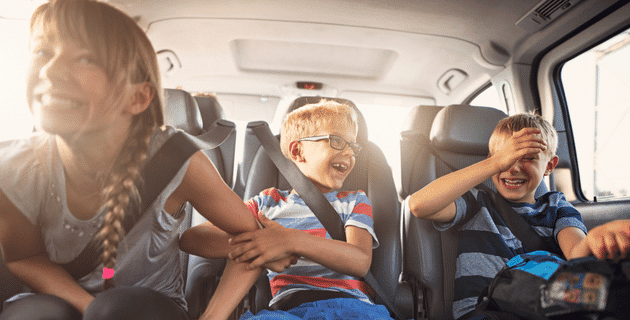
by California Casualty | Auto Insurance Info |
Kids spend a lot of time in and around vehicles. But they may not be aware of the potential risks, from automatic windows that can pinch tiny fingers, to cars that can back over their play areas without warning. Each year, more than 9,000 children are treated in the ER for injuries that happen in and around motor vehicles. Many of these injuries are preventable and teaching safe habits can help.
In honor of Child Passenger Safety Month in September, we’ve compiled a list of safety measures to teach your children so they can be safer in and around vehicles.
Safety Tips in a Vehicle
Buckle up.
Do:
-
-
- Have your child wear a seat belt for every ride.
- Position it correctly. The shoulder belt should be across the middle of the chest and shoulder. The lap belt should be low and snug across the hips.
Don’t:
-
-
- Place the shoulder belt under your child’s arm or behind his or her back.
- Play with seatbelts. Kids can easily become entangled.
Use a car seat or booster.
Do:
-
-
- Follow height, weight, and age guidelines for car seats and boosters in your state. This will ensure that seatbelts are positioned appropriately.
- Measure and weigh your kids a few times a year to determine which seat is best.
Don’t:
-
-
- Let your child ride in the front seat until about age 13 when airbags will not present a danger.
- Let kids lay down and sleep outside of their car or booster seats.
Practice safety around windows and doors.
Do:
-
-
- Explain that windows can go up and down, and pinch anything in their way.
- Teach that doors must stay closed when the vehicle is moving.
Don’t:
-
-
- Let your child touch the door handles or window controls unless an adult says it’s okay.
- Allow your child to stand on the armrest where controls are often located.
- Let your child put their hands or head outside the window.
Let the driver focus on the road.
Do:
-
-
- Encourage your child to sit quietly or find a quiet activity and enjoy the ride.
- Allow your child to ask appropriate questions and make polite conversation.
- Have your child ask the driver to pull over to a safe place if they need help with something (such as opening a juice box).
Don’t:
-
-
- Let your child be too loud. Your child should know that a car is not the place to argue or throw a tantrum.
- Encourage your child to ask the driver to look at something that’s not on the road.
- Allow your child to do anything that could lead to distracted driving for the driver.
A car is not a toy.
Do:
-
- Enforce the rule to stay safely in one’s seat when the car is moving.
- Encourage your children to find places other than the inside or the outside of a car to play.
Don’t:
-
-
- Let your children move around and play in a car even when it is not moving.
- Allow your kids to crawl into the trunk for any reason. It is not a good hiding spot and they could get trapped.
Pro Tip: Teach older children that cars (manufactured after September 2001) have glow-in-the-dark emergency release switches inside trunks. Show them how to find and release them in case of an emergency.
Safety Tips Around a Vehicle
Do:
-
-
- Help your children to pay attention to their surroundings. Look all around, and walk carefully and slowly.
- Show your children the white brake lights that indicate a car will be backing out.
- Require that your kids stay close to a supervising adult.
Don’t:
-
-
- Allow your children to run or play in a parking lot.
- Assume that parked cars will stay parked. Tell your children that cars often move suddenly.
Driveways are dangerous.
Do:
-
-
- Supervise children whenever they are playing in a driveway.
- Put up cones and flags when children are playing to alert cars and prevent them from pulling into the driveway.
- Designate a safe spot for children to stand when cars are pulling into or out of the driveway.
Don’t:
-
-
- Leave toys, chalk, bicycles, or any items that might entice kids in a driveway. Be sure to clean up after any driveway play.
- Allow your children to chase after balls or other toys that roll out of the driveway into the street.
- Assume a car sees you. Tell your children that just because you see them doesn’t mean that drivers see you.
Practice roadside safety.
Do:
-
-
- Teach your children the rules of the road for pedestrians.
- Toddlers should never be near a road without holding an adult’s hand. Teach them the difference between roads, sidewalks, crosswalks, and driveways. (Pro Tip: Play I Spy… and make it a game.)
- Preschoolers can recognize road signs by shape and color and traffic lights. Teach them the “stop, look and listen” rule, and to only cross the street with an adult.
- School-age children should be supervised by an adult. Teach them safe paths to walk and safe places to cross. As they get older, let the child take the lead to walk or bike to school, but go with them until you are confident that they can do it on their own.
- Pay close attention in school safety zones and around school buses.
- Reinforce safety skills with games like the Safe Paths to School downloadable board game for ages 4-12.
Don’t:
-
-
- Think that children can accurately judge distance and speed when it comes to moving vehicles.
- Forget to model the behaviors that you want your children to follow.
What Parents Can Do:
Do:
-
-
- Lock your car and put the keys out of reach of children.
- Create reminders so you don’t accidentally leave a young child in the car. Keep a stuffed animal in your child’s car seat, and place it in the front passenger seat when your child is in the car. That will be a visual reminder to check the back when you get out.
- Take a 5-second walk around your car before you back it up. Look to see if there are any children playing near it. The smallest kids are sometimes not seen, and children sometimes dart behind vehicles without thinking about it.
Pro Tip: Consider getting a backup alarm that sounds when you back up to help provide a warning to kids.
Don’t:
-
- Leave your children unattended in the car. Even if you have automatic safety systems, your child might find a way to test those. (If you see an unattended child, call 9-1-1.)
- Use your cell phone while driving. Model the behavior you want to see, and talk to your kids about the dangers of distracted driving.
Finally, maintain your car and insure your vehicle for additional peace of mind. Keeping you and your family safe is a wonderful way to celebrate Child Passenger Safety Month.
This article is furnished by California Casualty, providing auto and home insurance to educators, law enforcement officers, firefighters, and nurses. Get a quote at 1.866.704.8614 or www.calcas.com.






